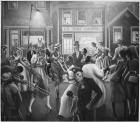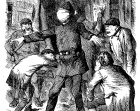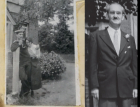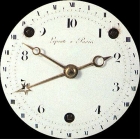Change and continuity
Consideration of change and continuity tends to be a feature of period and thematic studies. The latter, in particular, make it possible for students to examine trends and turning points over time, looking at those dimensions which remain stable while others alter, and examining the varying pace, direction and nature of those alterations. Another aspect of change and continuity – one that can also be explored within shorter depth studies – is the lived experience of change: how particular developments were experienced and understood by those who lived through them. These materials provide important insights into common student misconceptions and illustrate a range of strategies for planning and teaching (including the choice of worthwhile historical questions) that will support the development of more effective analytical descriptions of change and continuity. Read more
-

Lengthening Year 9’s narrative of the American civil rights movement
ArticleClick to view -

How visual evidence reflects change and continuity in attitudes to the police in the 19th and early 20th centuries
ArticleClick to view -

Learning from a pandemic
ArticleClick to view -

Using individuals’ stories to help GCSE students to explain change and causation
ArticleClick to view -

‘One big cake’: substantive knowledge of the mid-Tudor crisis in Year 7 students’ writing
ArticleClick to view -

Transatlantic slavery – shaping the question, lengthening the narrative, broadening the meaning
ArticleClick to view -

Film: What's the wisdom on... Change and continuity
ArticleClick to view -

Teaching Year 9 to argue like cultural historians
ArticleClick to view -

What’s The Wisdom On... change and continuity?
ArticleClick to view -

Cunning Plan 178: How far did Anglo-Saxon England survive the Norman Conquest?
ArticleClick to view -

‘Man, people in the past were indeed stupid’
ArticleClick to view -

From flight paths to spiders’ webs: developing a progression model for Key Stage 3
ArticleClick to view -

Dealing with the consequences
ArticleClick to view -

‘Through the looking glass’
ArticleClick to view -

Anything but brief: Year 8 students encounter the longue durée
ArticleClick to view -

From road map to thought map: helping students theorise the nature of change
ArticleClick to view -

Triumphs Show 167: Keeping the 1960s complicated
ArticleClick to view -

Inverting the telescope: investigating sources from a different perspective
ArticleClick to view -

Why are you wearing a watch? Complicating narratives of economic and social progress
ArticleClick to view -

Cunning Plan 163.1: GCSE Thematic study
ArticleClick to view

